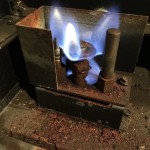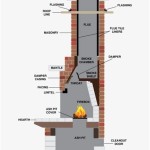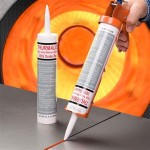Stacked Stone Fireplace Refacing: A Comprehensive Guide
The fireplace serves as a focal point in many homes, offering warmth and visual appeal. Over time, the original facade might become outdated, damaged, or simply no longer align with evolving aesthetic preferences. Refacing a fireplace with stacked stone provides a cost-effective and visually striking alternative to a complete fireplace replacement. This process involves applying a layer of stacked stone veneer over the existing fireplace structure, transforming its appearance while preserving the functionality of the firebox. This article provides a detailed explanation of stacked stone fireplace refacing, covering key considerations, materials, installation processes, and maintenance tips.
Understanding the Benefits of Stacked Stone Fireplace Refacing
Refacing a fireplace with stacked stone offers several advantages. Firstly, it enhances the aesthetic appeal of the living space. Stacked stone is available in a wide variety of colors, textures, and shapes, allowing homeowners to customize the fireplace to match their personal style and the overall décor of the room. The natural look of stone can add a rustic, contemporary, or even elegant touch, depending on the chosen style. Unlike simply painting over an existing surface, stacked stone introduces depth and dimension, creating a more visually impactful feature.
Secondly, refacing is typically less expensive and less disruptive than a complete fireplace replacement. Replacing a fireplace often involves demolition of the existing structure, requiring significant structural work and potentially affecting surrounding walls and flooring. Refacing, on the other hand, minimizes demolition, focusing on applying the stone veneer directly to the existing fireplace surround. This reduces labor costs, material expenses, and the overall timeline of the project.
Thirdly, stacked stone offers durability and longevity. Natural stone is inherently resistant to heat, moisture, and wear, making it a suitable material for fireplaces. While manufactured stone veneer shares the aesthetic properties of natural stone, it is designed for simplified installation and improved consistency in color and texture. Both options provide a durable and long-lasting finish, requiring minimal maintenance to retain their appearance.
Fourthly, refacing with stacked stone significantly increases the value of the home. Updating an old or worn fireplace provides a substantial return on investment. Potential homebuyers are often impressed by the visual appeal of a stone fireplace, and this can be a major selling point.
Key Considerations Before Starting the Refacing Project
Before embarking on a stacked stone fireplace refacing project, several factors need careful consideration. The first step involves assessing the structural integrity of the existing fireplace surround. Ensure that the surface is sound, clean, and able to support the added weight of the stone veneer. Any cracks, loose bricks, or other structural issues should be addressed before proceeding with the refacing process. Ignoring these underlying problems can compromise the stability of the new veneer and potentially lead to safety hazards.
Secondly, determine the type of stacked stone veneer to use. There are two primary types: natural stone and manufactured stone veneer. Natural stone offers unique variations in color and texture, providing a truly authentic look. However, it can be heavier and more difficult to install, requiring specialized tools and expertise. Manufactured stone veneer, also known as faux stone, is a lighter and more affordable alternative. It is designed to mimic the appearance of natural stone, offering consistent color and texture, and is easier to cut and install. The final selection depends on budget, desired aesthetic, and installation experience.
Thirdly, consider the fireplace's clearance requirements. Fireplaces generate significant heat, and maintaining the correct clearances from combustible materials is crucial for safety. Check local building codes and the fireplace manufacturer's specifications to determine the minimum clearances required between the fireplace opening and any surrounding materials, including the stacked stone veneer. If the existing surround does not meet these requirements, adjustments may be necessary, such as installing a non-combustible mantel or adjusting the thickness of the stone veneer.
Fourthly, obtain any necessary permits. Depending on location and the scope of the project, a building permit may be required. Contact the local building department to determine the specific requirements for fireplace refacing projects. Failing to obtain the necessary permits can result in fines, delays, and potential safety issues.
Fifthly, create a detailed design plan. This plan should include the dimensions of the fireplace surround, the type of stacked stone veneer to be used, the desired layout of the stones, and any additional features, such as a mantel or hearth extension. A well-defined design plan will help ensure that the refacing project is completed according to specifications and that the final result meets expectations.
The Stacked Stone Fireplace Refacing Process: A Step-by-Step Guide
The stacked stone fireplace refacing process involves several key steps, ensuring a professional and long-lasting result. The first step is preparing the existing fireplace surround. This involves cleaning the surface thoroughly to remove any dirt, dust, or loose debris. If the existing surface is painted or sealed, it may be necessary to roughen it up with a wire brush or sandpaper to improve adhesion of the mortar. Any loose or damaged areas should be repaired before proceeding.
Secondly, apply a scratch coat. A scratch coat is a thin layer of mortar that is applied to the prepared surface to provide a bonding surface for the stacked stone veneer. Use a notched trowel to apply the mortar evenly over the entire surface, creating ridges that will help the stone veneer adhere securely. Allow the scratch coat to dry for at least 24 hours before proceeding to the next step. This curing time is crucial for proper bonding and preventing cracking.
Thirdly, layout the stacked stone. Before permanently adhering the stones, it is recommended to dry-fit them on the floor or a large surface to determine the desired pattern and arrangement. This allows for adjustments to be made and ensures that the final result will be aesthetically pleasing. Pay attention to color variations, stone sizes, and overall balance when laying out the stones. Mark the stones as necessary for easy reference during installation.
Fourthly, install the stacked stone. Apply a layer of mortar to the back of each stone and press it firmly onto the scratch coat. Use a level to ensure that the stones are aligned properly and that the veneer is level and plumb. Maintain consistent spacing between the stones, using spacers if necessary. Work from the bottom up, allowing the mortar to set slightly before adding subsequent rows. This prevents the stones from sliding or shifting. Use a wet saw or a chisel to cut the stones as needed to fit around corners, edges, and other features.
Fifthly, grout the stacked stone (optional). Depending on the desired aesthetic, the stacked stone veneer can be grouted or dry-stacked. Grouting involves filling the spaces between the stones with mortar, creating a more uniform and polished look. Dry-stacking involves butting the stones tightly together, creating a more rustic and natural appearance. If grouting, use a grout bag to apply the mortar evenly between the stones, and then use a grout float to smooth and shape the grout lines.
Sixthly, clean the stacked stone. Once the mortar has dried completely, clean the surface of the stacked stone with a soft brush and a mild detergent solution to remove any excess mortar or debris. Rinse thoroughly with clean water. Avoid using harsh chemicals or abrasive cleaners, as these can damage the stone veneer. A muriatic acid can be used to remove mineral deposits from the stone but must be diluted and used with extreme caution.
Lastly, seal the stacked stone (optional). Applying a sealant to the stacked stone veneer can help protect it from staining, water damage, and wear. Choose a sealant that is specifically designed for natural stone or manufactured stone veneer. Apply the sealant according to the manufacturer's instructions, ensuring that the surface is clean and dry before application. Sealing the stone also enhances the appearance of the finished project. The type of sealer depends on the look desired. Some sealers are designed to enhance color, while others simply protect from weathering.
Maintaining Your Stacked Stone Fireplace
Proper maintenance is essential for preserving the appearance and longevity of a stacked stone fireplace. Regular cleaning is crucial for preventing the buildup of dirt, dust, and soot. Use a soft brush or a vacuum cleaner with a brush attachment to remove loose debris from the surface of the stone veneer. Wipe down the stone with a damp cloth and a mild detergent solution as needed. Avoid using harsh chemicals or abrasive cleaners, as these can damage the stone.
Inspect the fireplace regularly for any signs of damage, such as cracks, loose stones, or mortar deterioration. Address any problems promptly to prevent them from worsening. Small cracks in the mortar can be repaired with patching compound. Loose stones can be re-adhered with mortar or construction adhesive. If the damage is extensive, it may be necessary to consult a professional contractor.
Protect the stacked stone fireplace from excessive moisture. Water penetration can damage the stone veneer and promote the growth of mold and mildew. Ensure that the fireplace is properly sealed and that any leaks or water intrusion issues are addressed promptly. Consider installing a chimney cap to prevent rainwater from entering the chimney and damaging the fireplace.
Maintain proper ventilation around the fireplace. Adequate ventilation helps to prevent the buildup of moisture and soot, which can stain the stone veneer. Ensure that the chimney is properly cleaned and that the fireplace damper is functioning correctly. During periods of non-use, keep the damper closed to prevent drafts and heat loss.
Consider a professional inspection. Conduct a professional inspection once a year. A qualified inspector can identify potential problems that may not be apparent and recommend appropriate maintenance or repairs. Regular inspections can help to extend the lifespan of the stacked stone fireplace and ensure its safe operation.

Refacing A Fireplace With Stone Veneer Horizon

12 Stacked Stone Fireplace Ideas For Optimal Coziness

12 Stacked Stone Fireplace Ideas For Optimal Coziness

54 Inspiring Stacked Stone Fireplace Ideas For Your Home Makeover Fireplaces Remodel

Stone Selex Show Special 970 Fireplace Refacing Selexstone

Stone Fireplace Design And Remodel

Stacked Stone Fireplace Before After A Thoughtful Place

How To Update Your Fireplace With Stone Evolution Of Style

Stacked Stone Fireplace Reface Rustic New York By Ember Fireplaces Houzz Ie

Remodel Your Fireplace In Natural Stone Use
Related Posts








